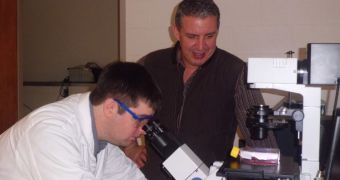Michigan State University (MSU) scientists announce the discovery of a new receptor on the surface of blood platelets. The discovery could open the way to developing a new class of drugs, fit to treat a wide range of existing diseases, the team explains.
Blood platelets, also known as thrombocytes, are cellular fragments that play important role in the formation of blood clots. This promotes hemostasis, the natural process through which blood eventually stops flowing from a wound.
MSU investigators say that the receptor they discovered on the surface of these fragments could constitute a new target for drug testing. The group was led by MSU research scientist Dana Spence.
Together with his colleagues, the expert was able to develop a new method for isolating and testing the new receptor, called P2X1. Studying it could be especially useful for fighting conditions that affect red blood cells, such as for example cystic fibrosis, hypertension and diabetes.
In addition to developing new drugs that target P2X1 specifically, researchers can also start re-testing existing medication, revising it so that it becomes able to take advantage of the new binding site, too.
“Scientists are always looking for new ‘druggable' receptors in the human body. This receptor, P2X1, has long been viewed as not important in platelets; our studies show that is not necessarily true. The receptor is very active; you just need to be careful in working with it,” Spence reveals.
He explains that conditions including sickle-cell anemia and diabetes tend to cause platelets to clog together even when they shouldn't, therefore producing a host of unwanted reactions in the body.
Details of the new study were published in the latest issue of the scientific journal Analytical Methods, which is edited by the London-based Royal Society of Chemistry.
“We have discovered a way to prepare and handle platelets so that we can study the receptor authentically. This research opens up new avenues of study and will allow researchers and pharmaceutical companies to re-appraise this receptor as a druggable target,” Spence explains.
He concludes by saying that the P2X1 receptor can be activated after a blood draw by simply adding a molecule called NF449 to the blood sample. Originally, scientists thought that this molecule played a role in inhibiting the receptor, but that turned out to be false.

 14 DAY TRIAL //
14 DAY TRIAL //